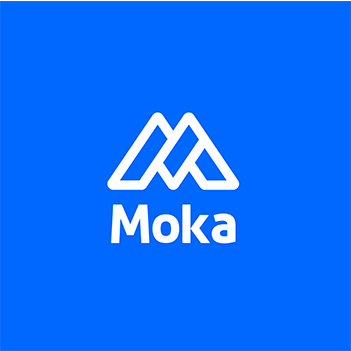Reducing Time-to-hire: Why You Need an Applicant Tracking System

In today’s competitive job market, every day counts when filling a position. A lengthy hiring process can lead to missed opportunities and increased costs. Reducing time-to-hire not only helps you secure top talent faster but also improves overall business efficiency. An applicant tracking system offers a game-changing solution by automating repetitive tasks and streamlining recruitment workflows. With 86% of companies reporting faster hiring after implementing such systems, it’s clear that leveraging this technology can transform your recruitment process and give you a significant edge.
Key Takeaways
Reducing time-to-hire is essential for attracting top talent in a competitive job market, as delays can lead to missed opportunities.
An Applicant Tracking System (ATS) automates repetitive tasks, such as resume screening and interview scheduling, significantly speeding up the hiring process.
Streamlined communication through an ATS enhances candidate experience, keeping applicants informed and engaged throughout the recruitment journey.
Data-driven insights from an ATS help identify bottlenecks in the hiring process, allowing for continuous improvement and efficiency.
Implementing an ATS can lead to a 20% reduction in time-to-hire and a 40% improvement in candidate quality, ultimately benefiting your organization’s productivity and costs.
Choosing the right ATS with essential features and ensuring proper training for your recruitment team are crucial steps for maximizing its effectiveness.
Investing in an ATS not only saves time and money but also strengthens your employer brand by providing a positive candidate experience.
Understanding Time-to-hire and Its Importance
What is Time-to-hire?
Time-to-hire refers to the duration between a candidate applying for a job and accepting an offer. It measures the efficiency of your recruitment process. A shorter time-to-hire indicates a streamlined hiring workflow, while a longer one often signals inefficiencies. This metric is crucial because it reflects how quickly you can secure talent in a competitive market.
Recruitment delays can result in missed opportunities. Top candidates often receive multiple offers, and if your process takes too long, you risk losing them to competitors. Research shows that 23% of candidates are only willing to wait a week after an interview, while 39% feel that 7 to 14 days is already too long. By tracking and optimizing time-to-hire, you can stay ahead in the race for top talent.
Why Reducing Time-to-hire is Crucial for Recruitment Success
Impact on Candidate Experience
A lengthy hiring process can frustrate candidates and leave a negative impression of your organization. Surveys reveal that 46% of workers describe their applicant experience as poor due to prolonged timelines. Additionally, 57% of job seekers lose interest in a role if the process drags on. These statistics highlight the importance of creating a smooth and efficient experience for applicants.
When you reduce time-to-hire, you show candidates that your company values their time. This improves their perception of your brand and increases the likelihood of them accepting your offer. A faster process also keeps candidates engaged, reducing the chances of them exploring other opportunities.
Effect on Business Productivity and Costs
Delays in hiring directly impact your business operations. Open positions mean increased workloads for existing employees, which can lead to burnout and decreased productivity. Moreover, the longer a role remains vacant, the more it costs your organization in terms of lost revenue and operational inefficiencies.
Streamlining your hiring process can save both time and money. According to LinkedIn, companies that optimize their recruitment workflows can achieve a 20% reduction in time-to-hire. This not only helps you fill roles faster but also minimizes the expenses associated with prolonged vacancies. By acting quickly, you ensure that your team remains productive and your business stays competitive.
Challenges of Traditional Hiring Processes
Manual Resume Screening and Shortlisting
Manually reviewing resumes consumes a significant amount of time and energy. You must sift through hundreds, sometimes thousands, of applications to identify qualified candidates. This process often leads to delays, especially when your team is overwhelmed by an influx of resumes. For example, GreenThumb, a small startup, faced this exact challenge when they struggled to process applications within a limited timeframe. Without an efficient system, you risk overlooking top talent or wasting time on unqualified applicants.
Manual screening also increases the likelihood of human error. Important details can be missed, and unconscious biases may influence decisions. These inefficiencies not only slow down your hiring process but also reduce the quality of hires. By relying on traditional methods, you limit your ability to focus on strategic recruitment efforts.
Inefficient Communication Between Recruiters and Hiring Teams
Clear and timely communication is essential for a smooth hiring process. Traditional methods often involve scattered emails, phone calls, and spreadsheets, which can lead to miscommunication and delays. When recruiters and hiring managers fail to stay aligned, candidates experience longer wait times and inconsistent updates.
In one instance, a major financial institution faced backlash from candidates due to generic rejection emails and delayed responses. This lack of personalized communication left applicants feeling undervalued and frustrated. Poor communication not only damages your employer brand but also increases the chances of losing top candidates to competitors.
Streamlining communication ensures that everyone involved in the hiring process stays informed and works collaboratively. When your team operates cohesively, you can make faster decisions and provide candidates with a better experience.
Lack of Data and Insights for Informed Decision-making
Traditional hiring processes often lack the tools needed to gather and analyze data effectively. Without insights, you cannot identify bottlenecks or optimize your recruitment strategy. For instance, you might not know why certain roles take longer to fill or why candidates drop out of the process.
Data-driven decision-making is crucial for improving hiring outcomes. GreenThumb, after adopting an ATS, reported a 40% improvement in candidate quality and better employee retention due to enhanced cultural fit. This success stemmed from using data to refine job descriptions and align them with organizational needs. Without such insights, you may continue to face recurring challenges without understanding their root causes.
By relying on traditional methods, you miss opportunities to enhance efficiency and make informed decisions. Leveraging data allows you to track progress, measure success, and continuously improve your hiring process.
Introducing the Applicant Tracking System

An applicant tracking system (ATS) is a software solution designed to simplify and enhance the recruitment process. It acts as a centralized platform where recruiters and hiring managers can manage job postings, track candidates, and streamline communication. By automating repetitive tasks, an ATS allows you to focus on strategic hiring decisions and find the best talent efficiently.
What is an Applicant Tracking System?
An applicant tracking system is more than just a tool for organizing resumes. It uses advanced technology, including artificial intelligence (AI), to automate key recruitment tasks. With an ATS, you can upload resumes, parse candidate information, and create searchable profiles. This system enables you to filter and rank applicants based on specific criteria, such as skills, experience, or keywords.
The ATS also serves as a single source of truth for all candidate-related data. Resumes, cover letters, interview notes, and communication history are stored in one place. This accessibility ensures that your team can collaborate effectively, even if they work remotely. By leveraging an ATS, you can reduce manual effort, minimize errors, and make faster, data-driven hiring decisions.
Key Features of an ATS
Resume Parsing and Keyword Matching
One of the most powerful features of an ATS is its ability to parse resumes and match them with job requirements. The system scans resumes for relevant keywords, qualifications, and experience, then ranks candidates based on their suitability. This automated process eliminates the need for manual screening, saving you hours of work.
For example, if you're hiring for a software developer role, the ATS can identify candidates with specific programming skills like Python or Java. It ensures that only the most qualified applicants move forward in the hiring process. This feature not only speeds up recruitment but also improves the quality of your hires.
Automated Interview Scheduling
Coordinating interviews can be time-consuming, especially when dealing with multiple candidates and team members. An ATS simplifies this process by automating interview scheduling. It integrates with calendars and sends invitations to both candidates and interviewers, ensuring that everyone stays informed.
The system can also send reminders to reduce no-shows and reschedule interviews if conflicts arise. By automating these administrative tasks, you can focus on evaluating candidates rather than managing logistics. This feature enhances efficiency and provides a seamless experience for everyone involved.
Centralized Candidate Database
An ATS creates a centralized database where all candidate information is stored and organized. This database includes resumes, application forms, interview feedback, and communication records. You can access this information anytime, making it easy to track candidate progress and revisit past applicants for future roles.
Having a centralized database also improves collaboration among your team. Recruiters and hiring managers can share notes, provide feedback, and stay aligned throughout the hiring process. This transparency ensures that decisions are well-informed and consistent. With all data in one place, you can maintain a structured and efficient recruitment workflow.
How an Applicant Tracking System Reduces Time-to-hire

Automating Repetitive Recruitment Tasks
Resume screening and ranking
Manually reviewing resumes can consume hours of your time. An applicant tracking system automates this process by using advanced algorithms to screen and rank candidates based on their qualifications. The system identifies the most suitable applicants by analyzing keywords, skills, and experience. This automation reduces the time spent on resume review by up to 66%, as seen in companies like IBM. By eliminating manual screening, you can focus on engaging with top candidates rather than sorting through piles of applications.
Automated follow-ups and reminders
Keeping candidates informed throughout the hiring process is essential, but it can be challenging to manage follow-ups manually. An applicant tracking system simplifies this by automating communication. It sends timely reminders for interviews, follow-ups after assessments, and updates on application status. This ensures that candidates stay engaged and reduces the risk of losing them to competitors. According to HR professionals, automating these tasks saves significant time and enhances the overall recruitment experience.
Streamlining Communication and Collaboration
Centralized messaging for recruiters and candidates
Effective communication is the backbone of a successful hiring process. An applicant tracking system provides a centralized messaging platform where recruiters and candidates can interact seamlessly. This eliminates the need for scattered emails or phone calls, ensuring that all communication stays organized. With a centralized system, you can respond to candidate inquiries promptly and maintain a professional image. This streamlined approach not only saves time but also improves the candidate experience.
Real-time updates for hiring managers
Keeping hiring managers informed is crucial for quick decision-making. An applicant tracking system offers real-time updates on candidate progress, interview schedules, and feedback. This transparency allows hiring managers to stay aligned with recruiters and make faster decisions. For example, automated notifications ensure that everyone involved in the process remains on the same page. By reducing delays caused by miscommunication, you can accelerate the hiring timeline and secure top talent more efficiently.
Leveraging Data-driven Insights and Analytics
Identifying bottlenecks in the hiring process
Understanding where delays occur in your recruitment process is key to improving efficiency. An applicant tracking system provides detailed analytics that helps you identify bottlenecks. For instance, you can track how long candidates spend in each stage of the hiring process. This data allows you to pinpoint areas that need improvement, such as slow interview scheduling or prolonged decision-making. By addressing these issues, you can significantly reduce your time-to-hire.
Optimizing job postings for better candidate matches
Crafting effective job postings is essential for attracting the right candidates. An applicant tracking system uses data insights to optimize your job descriptions. It analyzes past hiring trends and candidate feedback to suggest improvements. For example, the system might recommend including specific keywords or adjusting the job title to attract more qualified applicants. By optimizing your postings, you increase the likelihood of finding the perfect fit quickly, further reducing your hiring timeline.
Actionable Steps to Implement or Optimize an Applicant Tracking System
Selecting the Right ATS for Your Business
Choosing the right applicant tracking system is a critical step in transforming your recruitment process. Not all ATS platforms are created equal, so you must evaluate your business needs carefully.
Key features to prioritize
When selecting an ATS, focus on features that directly address your hiring challenges. Look for tools like resume parsing, automated interview scheduling, and centralized communication. These features save time and improve efficiency. Additionally, ensure the system offers robust analytics to track and optimize your recruitment performance. According to surveys, 86% of recruiters reported faster hiring after implementing an ATS with these capabilities. Prioritizing these features ensures you get the most value from your investment.
Scalability and integration with existing tools
Your ATS should grow with your business. A scalable system accommodates increasing hiring demands without compromising performance. Integration is equally important. Ensure the ATS works seamlessly with your existing tools, such as HR software or email platforms. This compatibility streamlines workflows and reduces the need for manual data entry. For example, companies that integrated their ATS with other tools experienced smoother operations and fewer delays in their hiring processes.
Best Practices for Effective ATS Usage
Implementing an ATS is only the beginning. To maximize its potential, you need to follow best practices that enhance its effectiveness.
Training your recruitment team
Your team must understand how to use the ATS effectively. Provide comprehensive training sessions to familiarize them with the system's features. Focus on practical applications, such as using filters to shortlist candidates or generating reports for hiring insights. A well-trained team can leverage the ATS to its full potential, leading to faster and more accurate hiring decisions. Studies show that 70% of workers agree that ATS automation has significantly increased their productivity.
Regularly updating and maintaining the system
An ATS requires regular updates to stay efficient and relevant. Keep the system updated with the latest software versions and features. Regular maintenance ensures smooth operation and prevents technical glitches. Additionally, review and update job descriptions, keywords, and templates within the system to align with current hiring needs. This proactive approach keeps your recruitment process agile and effective.
Measuring the Impact of an ATS
Tracking the performance of your ATS helps you understand its value and identify areas for improvement. Use measurable metrics to evaluate its impact on your hiring process.
Tracking improvements in time-to-hire
Monitor how the ATS affects your time-to-hire. Compare the duration of your hiring process before and after implementation. Many businesses report a 20% reduction in time-to-hire after adopting an ATS. This metric reflects the system's ability to streamline workflows and eliminate bottlenecks. Regularly reviewing this data ensures your ATS continues to deliver results.
Analyzing candidate quality and retention rates
Evaluate the quality of hires made through the ATS. Use metrics like employee performance and retention rates to assess whether the system helps you find the right talent. Research shows that companies using an ATS experience 40% lower turnover rates for new hires. This improvement highlights the system's role in identifying candidates who align with your organization's needs. By analyzing these outcomes, you can refine your recruitment strategy and maximize the ATS's benefits.
Additional Benefits of Using an Applicant Tracking System
Enhancing Candidate Experience
An applicant tracking system (ATS) transforms the way candidates interact with your hiring process. It ensures a seamless and professional experience from start to finish. By automating communication, you can keep candidates informed about their application status without delays. For instance, automated updates and reminders make applicants feel valued and engaged.
A streamlined process also reduces frustration. Candidates no longer face long waiting periods or unclear instructions. According to research, 94% of recruiters believe their ATS has positively impacted their hiring process. This improvement directly translates to a better candidate experience. When applicants feel respected and informed, they are more likely to view your company favorably, even if they don’t get the job.
Additionally, an ATS simplifies the application process. Features like mobile-friendly interfaces and pre-filled forms make it easier for candidates to apply. This convenience attracts more qualified applicants and enhances their perception of your organization. A positive experience not only helps you secure top talent but also strengthens your employer brand.
Reducing Recruitment Costs
An ATS significantly lowers the costs associated with traditional hiring methods. By automating repetitive tasks, such as resume screening and interview scheduling, you save valuable time and resources. For example, IBM reported a 66% reduction in time spent on applicant review after integrating an ATS into their hiring process. This efficiency translates into cost savings.
The system also minimizes the need for external recruitment agencies. With advanced tools to source and filter candidates, you can handle high-volume hiring internally. This reduces dependency on third-party services, which often come with hefty fees. Furthermore, by filling positions faster, you avoid the financial impact of prolonged vacancies. Open roles can lead to lost productivity and increased workloads for existing employees.
An ATS also helps you make better hiring decisions. By improving the quality of hires, you reduce turnover rates and the costs associated with rehiring. Research shows that 78% of recruiters using an ATS have improved the quality of candidates they hire. Investing in an ATS is not just about saving money—it’s about maximizing the value of every dollar spent on recruitment.
Improving Compliance and Record-keeping
Maintaining compliance with hiring regulations is a critical aspect of recruitment. An ATS simplifies this process by automatically tracking and storing candidate data. It ensures that your hiring practices align with legal requirements, such as equal opportunity employment laws. This reduces the risk of costly penalties or lawsuits.
The system also provides a centralized database for all recruitment records. Resumes, interview notes, and communication logs are stored securely in one place. This organization makes it easy to retrieve information during audits or legal disputes. Additionally, an ATS can generate reports to demonstrate compliance with hiring policies.
By improving record-keeping, you also enhance transparency. Hiring managers and recruiters can access the same data, ensuring consistency in decision-making. This level of organization not only protects your company but also builds trust with candidates. When applicants see that your process is fair and transparent, they are more likely to view your organization as credible and trustworthy.
Reducing time-to-hire is vital for maintaining a competitive edge in today’s job market. An applicant tracking system empowers you to streamline recruitment by automating repetitive tasks, improving communication, and providing actionable insights. This efficiency allows your team to focus on strategic hiring decisions, ensuring you secure top talent faster. By adopting an ATS and following best practices, you can save valuable time, cut recruitment costs, and enhance the candidate experience. Take the first step today—explore ATS solutions to revolutionize your hiring process and achieve faster, more effective results.
See Also
Discovering Top Talent With Applicant Tracking Systems
Essential Factors for Selecting an Applicant Tracking System
Ten Must-Have Features in Applicant Tracking Systems
Five Tips for Choosing the Best Applicant Tracking System
Effective Strategies for Utilizing an Applicant Tracking System
From recruiting candidates to onboarding new team members, MokaHR gives your company everything you need to be great at hiring.
Subscribe for more information

